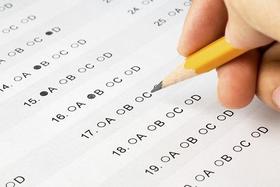The times are always changing and what was considered normal a few decades ago may no longer be the case. While change is often a good thing, sometimes it isn’t – that is the case with the rising prevalence of obesity among children. Childhood obesity rates are ever-climbing, and it has become something of an epidemic in the United States.
While obesity may seem like nothing more than an aesthetic issue, body weight has a significant impact on health and wellness – especially for children. Children who are overweight or obese are much more likely to become obese adults and that puts them at right for a whole host of dangerous health problems that could negatively impact their lifespan and their quality of life. As a parent, it is your job to provide for your children and to keep them happy and healthy. If your child is overweight or obese, don’t play it off as a minor issue – step up and do something about it!
In this article, we’ll discuss the problem of childhood obesity and what public schools are doing to prevent it. We’ll also discuss some at-home tips you can implement to help your child achieve and maintain healthy body weight.
This video examines the issue of childhood obesity.
Identifying the Problem: Obesity in Children and Adolescents
According to the National Conference of State Legislatures, over 78 million adults and more than 12 million children in the United States are obese. These numbers qualify obesity as a problem of epidemic proportions, and the problem only seems to be getting worse. In fact, none of the 50 states has an obesity rate below 21% and twenty states have an obesity rate of 30% or higher.
Even more shocking than the numbers themselves is how quickly they continue to climb. Since 1980, the percentage of school-age children who are overweight has more than doubled, and obesity rates among adolescents have more than tripled.
It isn’t just obesity that is the problem, either. According to a report published by the Centers for Disease Control and Prevention (CDC), weight-related health conditions are becoming more prevalent as well. To give an example, type 2 diabetes was largely unseen in children and young adults as few as ten years ago but now, children and adolescents account for nearly 50% of new cases in some communities. Overweight and obesity can also increase a child’s risk for heart disease and psychological problems.
But what are some of the underlying causes for obesity in children?
Childhood obesity is an incredibly complex issue that is influenced by a multitude of factors. Many of these factors are directly linked to the community in which a child is raised. In addition to cultural influences, where a child lives can affect his ability to make healthy food choices.
Here are some of the factors which may contribute to weight gain or obesity in children:
- Eating high-calorie, low-nutrient foods at most meals
- Not getting enough physical activity on a regular basis
- Engaging in sedentary activities like watching TV or playing video games
- Overuse of medications that cause certain side effects
- Unhealthy sleep routines
- No education about healthy habits and food choices
- Lack of affordable healthy food options
- Poor role models for making healthy food and beverage choices
All of these factors combined can start the train rolling down the track toward obesity. While it may seem simple to counteract some of these factors, communities with the highest obesity rates almost become a self-fulfilling prophecy that actually supports and encourages unhealthy behavior.
This video reports on the connection between schools and childhood obesity.
Obesity can have a negative psychological impact on a child, but it can also affect his health both in childhood and as he develops into an adult. Here are some of the immediate health risks linked to obesity in children and young adults:
- High blood pressure and high cholesterol
- Increased risk for heart disease
- Impaired glucose tolerance and insulin resistance
- Increased risk for type 2 diabetes
- Breathing problems such as sleep apnea and asthma
- Musculoskeletal issues and joint problems
- Fatty liver disease and gallstones
- Heartburn or gastroesophageal reflux disease (GERD)
- Psychological problems like depression and anxiety
- Low self-esteem and reduced quality of life
- Social/behavioral issues such as bullying
Not only does obesity cause certain immediate health risks, but it can also contribute to future health risks. For example, children who are overweight or obese are much more likely to become obese adults. Furthermore, if an obese child becomes an obese adult, both his excess weight and the associated disease risk factors are typically more severe.
What Role Does A Public School Play?
For many years, body weight was considered a matter of personal choice among Americans, but it has gotten to the point where obesity in children has become so common (and so dangerous), that it’s time to stand up and take notice. As was mentioned in the previous section, there are a number of factors that contribute to obesity in children and not all of them are within the child’s control.
This is where schools come in when it comes to the fight against childhood obesity.
According to recent statistics, over 95% of young people are enrolled in schools, which means that schools have the potential to make a huge impact. In fact, promoting healthy eating and regular exercise has always been a component of the American educational system – schools are by no means being asked to take on an entirely new role.
Unfortunately, many schools make only minimal effort to prevent obesity and to keep their students healthy. Let’s take a quick look at the ways in which schools can help fight obesity in children:
- Promoting healthy eating and encouraging smart food choices
- Encouraging regular activity throughout the day
- Educating children in nutrition and other aspects of health
- Monitoring body weight and other metrics of health and wellness
Every school is different, and the efficacy of any obesity prevention program is, to some degree, determined by the makeup of the student body and the surrounding community. In any case, however, taking the steps listed above can help students improve and maintain their health for a brighter future.
What Are Public Schools Doing to Prevent Obesity?
You’ve already seen a list of programs or policies schools can adopt to help fight childhood obesity, but what steps can be taken to actually put those programs to work? Here is an in-depth explanation of how the ideas from the previous section can be put into action:
1. Promoting Healthy Eating and Encouraging Smart Food Choices
The first step in promoting healthy eating and smart food choices is to make healthy food choices available. While many students bring their lunch to school, a significant number of students eat school lunches, so it is important that these meals be healthy and nutritious. Unfortunately, there is a great deal of controversy regarding how school menus should be created and controlled, and decisions are often made based on funding.
Though there is still room for improvement, updated nutrition standards provide schools with guidelines for creating and serving healthy meals. Here are some of the other ways schools can encourage healthy eating and promote smart food choices:
- Encourage students to take part in breakfast, lunch, and after-school snack programs.
- Offer meals and snacks that meet national nutritional standards.
- Identify and stick to minimum and maximum calorie levels for each age group.
- Reduce stigmatization of students who participate in free or reduced-price meal programs.
- Give students adequate time to eat a healthy meal for breakfast and lunch.
In addition to making these changes to school-provided meals, schools should also make healthy foods available outside of mealtime. Vending machines, for example, should be stocked with healthy snacks instead of sugary candy and other high-calorie snacks. Water should be made available throughout the day, and all food served at school functions should be healthy as well.
This video looks at what schools are doing to prevent obesity.
2. Encouraging Regular Activity Throughout the Day
According to health standards, children require at least 60 minutes per day of moderate to vigorous physical activity. Much of a student’s day is spent sitting behind a desk, but there are plenty of opportunities to promote physical activity throughout any given school day.
Unfortunately, new data shows that physical education instruction time has decreased across the board in U.S. schools. In fact, only 4% of elementary schools, 8% of middle schools, and 2% of high schools offer daily physical education to their students. While many schools offer physical education classes, most of them do not make it a requirement – especially at the high school level.
To meet the physical activity needs of school children, here are some of the policies and practices that the CDC and the World Health Organization recommend:
- Hire licensed PE teachers and offer ongoing training to adhere to national standards.
- Offer daily physical education to children in grades K-12.
- Provide at least 150 minutes of PE for elementary school students and 225 minutes per week for middle and high school students.
- Ensure that students spend the majority of their PE time actually being active.
- Adapt all PE criteria and curricula for children with special needs and disabilities.
- Promote enjoyable activities that encourage movement and promote lifelong physical activity.
In addition to physical education, elementary school students should be given daily recess, ideally before lunch rather than after. Recess should not be withheld as a form of punishment and additional opportunities for physical activity should be offered before and after school.
3. Educating Children in Nutrition and Other Aspects of Health
Many children who are obese do not understand the factors which contribute to their condition, nor do they understand what can be done to change it. This is why health and nutrition education is so important and why it should be incorporated into the school’s health education curriculum. Nutrition and health concepts can also be woven into other core classroom subjects.
Here are some of the topics that should be addressed in school health education classes:
- Basics of balanced nutrition, including national nutritional standards.
- How to balance the intake of protein, fats, and carbohydrates.
- Information about calorie consumption and its impact on body weight.
- The consequences of making unhealthy food choices.
- The impact of physical exercise on health and body weight.
- The risks associated with being overweight or obese.
Health education is just as important for school students as education in the core subjects. As such, student learning in this area should be monitored and reported on school report cards in the same way as core subjects. It is also important that teachers receive ongoing health training to ensure that they are up-to-date with the latest standards.
4. Monitoring Body Weight and Other Metrics of Health and Wellness
Having obesity prevention policies and programs in place is important, but you also have to have some way of measuring the success of these programs. Monitoring and tracking student BMIs is an important aspect of tracking the success of obesity prevention programs and identifying students who are at risk for becoming overweight or obese. Of course, there are challenges that come with gathering this kind of personal data on students, so parents must be informed and must give consent.
Here are some of the safeguards that should be put in place for any BMI measurement program:
- Introduce the program to students, parents, guardians, and school staff to ensure there is a process for obtaining consent to measure student height and weight.
- Ensure that staff members who collect the information are properly trained to obtain accurate and reliable results without stigmatizing the student.
- Make sure that data collection is private and use equipment that can accurately measure both height and weight.
- Develop efficient procedures for data collection and use the data for the right purpose, not as a basis for evaluating student or teacher performance (ex: in health class or P.E.).
As important a role as they may play, schools are only one link in the chain when it comes to keeping kids healthy. Obesity prevention will only work if it becomes part of the child’s life in all aspects, including his home life. Keep reading to learn how to get involved in your child’s health at home.
How Can You Get Involved in Your Child’s Health?
As a parent, it is your job to keep your child as happy and healthy as possible – that means helping him maintain healthy body weight. Unfortunately, it can be tricky to determine whether a child is overweight because children grow at different rates. You must also consider the fact that the amount of body fat a child has changed with age and could be different between girls and boys. If you want to see whether your child might be overweight, you can calculate his body mass index (BMI).
If you determine that your child is overweight, or if you are concerned about his eating habits, you should start teaching him healthy habits as soon as possible. Parents should be teaching their children healthy habits in all aspects of life including eating, drinking, physical activity, and sleep. Here are some simple things you can do to help your child develop healthy habits:
- Teach your child about balancing his food and beverage consumption with his activity level.
- Take your child to the grocery store with you and encourage them to pick out healthy snacks.
- Be a good role model for your children and make healthy food choices yourself.
- Encourage your children to get at least an hour of physical activity per day and limit the time they spend on sedentary activities.
- Get the whole family involved in making healthy choices so your child doesn’t feel isolated.
Now, let’s take a closer look at these tips and talk about some of the specific ways you can implement them for your child and for your family.
When it comes to improving your child’s eating habits, the best thing you can do is make healthy foods easy to access. Build family meals around fresh fruits and vegetables, whole grains, and lean proteins. Choose fat-free or low-fat dairy products or switch to dairy-free alternatives like almond milk. Encourage your child to drink plenty of water and moderate your portions to prevent overeating. You should also make unhealthy foods an occasional treat, not an everyday dessert.
In addition to encouraging healthy eating habits in your children, you should also teach them healthy activity habits. Encourage your child to be active by offering fun activities like climbing or bike riding. Limit the amount of time your children spend on sedentary activities like TV and video games and plan active family outings for the weekend. Again, you can be a good role model for your children by getting your own daily dose of exercise.
As a parent, you are your child’s strongest advocate and it is within your child’s best interest to prevent him from becoming obese. If your child is already overweight or is teetering on the edge, don’t delay! Take the information you’ve learned here and put it to work in improving your child’s body weight for better health today and into the future.
Questions? Contact us on Facebook. @publicschoolreview















